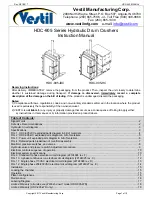
(2) Check & Maintenance during storage
Apply grease or lubricant oil to non-painted metal to avoid corrosion.
Check the leakage of fuel, oil and coolant. If necessary, repair the damaged part.
The battery should be charged about once a month not to be discharged entirely.
Check the tire air pressure and maintain the proper pressure.
▶
As the electrolyte of battery is sulfuric acid, it is emits the explosive and poisonous
gas. It is strong enough to burn skin, clothing and can cause blindness if splashed
into eyes.
- Keep the sparks and flames and cigarettes away from the battery.
- When handling the battery, wear safety glasses to protect the eyes.
- If the electrolyte contacts the eyes and skin, wash with water immediately and go
to see a doctor. (
※
For further information, refer to the section of “Battery handling
and Notices”,
See page 5-25
)
▶
When removing and storing battery, select dry and cool place out of reach of
children.
Caution
(3) Preparation for Reuse
※
When using first after long-term storage, check each part as below.
1
1
1
1
- 13
※
When using first after long-term storage, check each part as below.
Check the damaged part or loosen part
Check the leakage of fuel, coolant, engine oil, transmission and front axle oil.
Check the level and density of the engine coolant.
Check the level of engine, transmission, rear and front axle oil, and fuel.
(For further information, refer to the section “5. Lubrication and Maintenance” in this manual.)
Check all drive belts carefully, paying particular attention to the point where the straight run of the belt
starts to bend around the pulley. Check the vee groove in the pulley for corrosion.
Electric system check
- Is there any open circuit or any other problem in the wiring?
- Is there any problem of the instruments?
- Is the charging state of the battery sufficient?
Start engine and then check the engine oil pressure indicator and battery charging indicator. Run the
engine at a fast idling speed (suggest 1000/1500 rpm) until normal operating temperature is
resistered, and check for oil, fuel and coolant leakage. (For further information,
See page 4-1
)






































